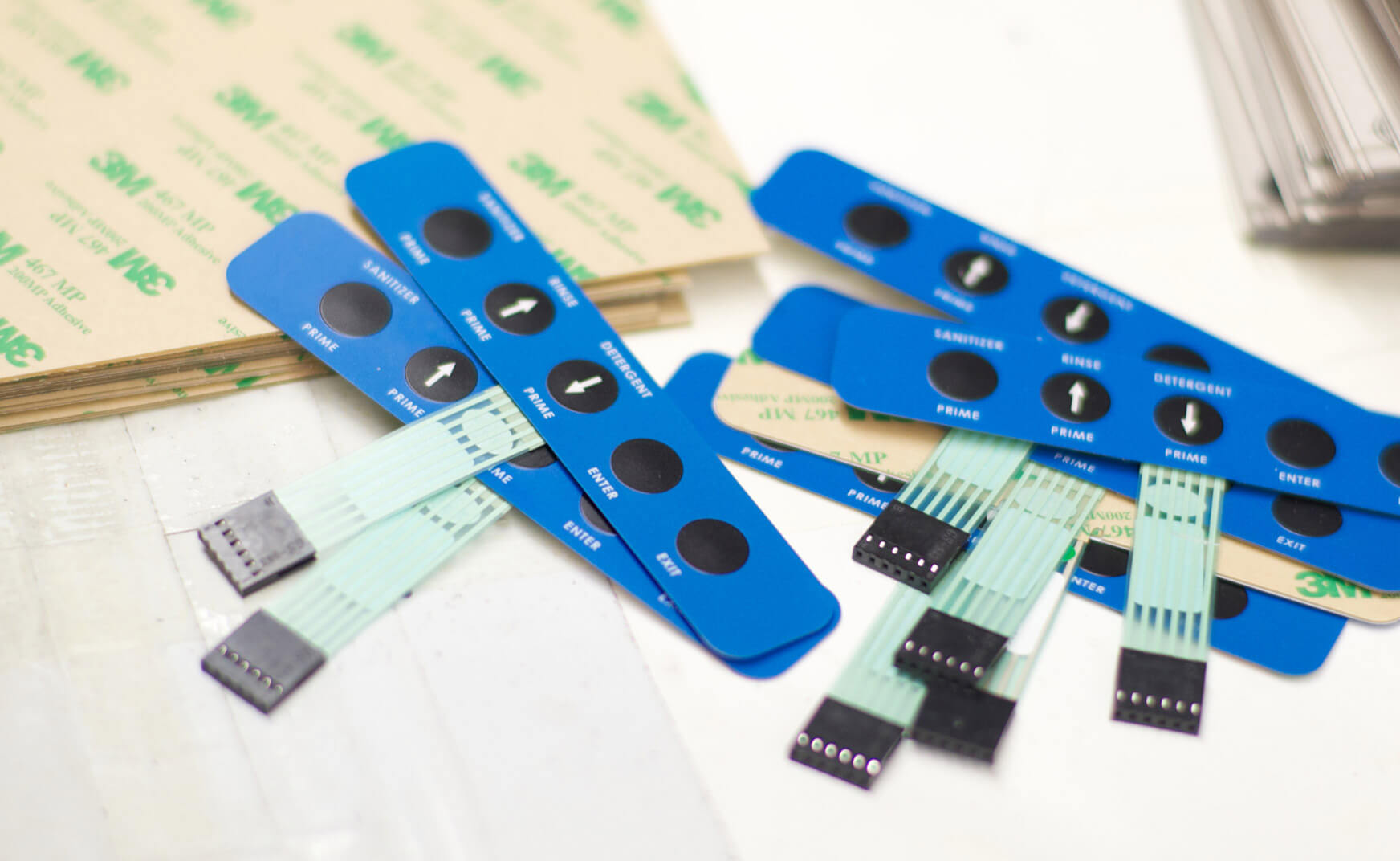Explore Various Types of Membrane Switch Technologies for Your Demands
Explore Various Types of Membrane Switch Technologies for Your Demands
Blog Article
How Membrane Layer Switches Over Contribute to the Durability of Electronic Control Panels
Membrane buttons play an important function in boosting the sturdiness of electronic control panels, mainly with their multi-layered building which gives effective defense versus ecological elements such as dampness and dirt. The absence of relocating components considerably minimizes the likelihood of mechanical failures, making membrane switches ideal for demanding applications.
Meaning of Membrane Buttons

Membrane layer switches are designed to be slim and lightweight, making them appropriate for applications where space is restricted. They can be made in numerous forms, dimensions, and shades, providing adaptability in design that satisfies aesthetic and practical requirements. In addition, membrane layer buttons can include numerous technologies, such as tactile feedback and LED indicators, boosting individual experience.
As a result of their construction, membrane layer switches are often resistant to dust, wetness, and general wear, adding to their resilience sought after settings. Their seamless design not just helps with simple cleaning however likewise decreases the risk of mechanical failure, making them a recommended selection for suppliers looking for reliable interface in their electronic control board.
Protection Versus Ecological Factors
The layout of membrane switches over inherently gives a level of defense versus various ecological elements, which is essential for keeping functionality in challenging problems - Membrane Switch. These switches are normally constructed with layers of flexible materials that secure internal components from dampness, dust, and contaminants. By enveloping the wiring, membrane layer changes minimize the danger of brief circuits and corrosion, which can dramatically harm efficiency
In addition, making use of robust adhesives and sealers throughout production improves their resistance to ecological obstacles. Membrane layer switches can endure exposure to chemicals and solvents, making them appropriate for industries such as food processing and healthcare, where health and cleanliness are extremely important. Their seamless surface area layout additionally stops the build-up of dirt and microorganisms, facilitating simpler cleaning and maintenance.
Temperature changes are another ecological issue, and membrane buttons are crafted to operate effectively across a broad variety of temperature levels (Membrane Switch). This flexibility ensures that control panels continue to be operational in numerous setups, from industrial atmospheres to customer electronic devices
Effect On Customer Interaction
User communication with digital control panels is considerably affected by the design and performance of membrane switches. These buttons give a responsive interface that improves the overall user experience, enabling intuitive navigating and control. Their receptive nature makes certain that individuals receive prompt responses upon activation, which is crucial for jobs needing accuracy and effectiveness.
Moreover, the smooth surface of membrane layer changes assists in easy cleansing and maintenance, advertising individual confidence in the integrity of the user interface. This tidiness is specifically essential in atmospheres where hygiene is paramount, such as medical or food handling setups. Furthermore, the compact and light-weight layout of membrane layer switches over adds to the visual appeal of control panels, motivating user interaction through a modern and smooth look.
Moreover, the assimilation of visual components, such as published symbols and backlighting, helps users rapidly determine features, minimizing the discovering contour related to brand-new tools. Consequently, individuals can operate tools more effectively, causing boosted productivity and satisfaction. In recap, membrane buttons play a pivotal function in enhancing customer interaction by combining functionality, aesthetics, and convenience of usage, ultimately resulting in boosted operational effectiveness.
Layout Adaptability and Personalization
Layout versatility and personalization are necessary elements of membrane switches, allowing manufacturers to customize digital control board to specific applications and customer demands. This flexibility enables the combination of different design components, such as colors, graphics, and appearances, which can enhance the visual charm and individual involvement of the control board.
Membrane layer switches can be tailored in shapes and size, suiting a large range of devices and applications, from industrial machinery to consumer electronic devices. This flexibility makes sure that makers can produce instinctive interfaces that line up with find out here now individual assumptions and operational needs. Additionally, the ability to incorporate distinct features such as backlighting or tactile feedback further boosts use, permitting a more interactive experience.
In addition, the manufacturing procedure for membrane layer changes sustains the fast prototyping of designs, enabling manufacturers to repeat and fine-tune their concepts quickly. This capability not just speeds up the development timeline but additionally guarantees that the last item satisfies particular practical and aesthetic criteria.

Cost-Effectiveness and Longevity
Cost-effectiveness and long life are substantial benefits of membrane buttons, making them an eye-catching option for producers and end-users alike. These buttons are normally less i was reading this expensive to create than conventional mechanical buttons, primarily due to their streamlined production procedures and the lowered number of elements called for. This cost benefit prolongs not just to initial production however additionally to long-lasting functional costs, as membrane layer buttons often require much less maintenance and have a lower failing price.
Moreover, the longevity of membrane layer switches contributes to their general value. Constructed from resilient products, they are resistant to environmental factors such as wetness, dirt, and chemicals, which can cause premature wear in various other button kinds. The lack of relocating parts lessens mechanical failing, allowing membrane layer switches over to keep performance over extended durations.
This resilience is particularly valuable in applications requiring consistent performance under demanding conditions, such as clinical devices and commercial devices. Eventually, the combination of cost-effectiveness and durability makes membrane switches over a financially viable selection for suppliers, supplying trustworthy solutions that hold up against the test of time while enhancing monetary considerations.
Verdict
In final thought, membrane buttons considerably improve the sturdiness of electronic control panels through their durable building and construction and protective features - Membrane Switch. Generally, have a peek at these guys membrane switches represent a reputable and cost-effective choice for boosting the long life and performance of digital control systems.
Report this page